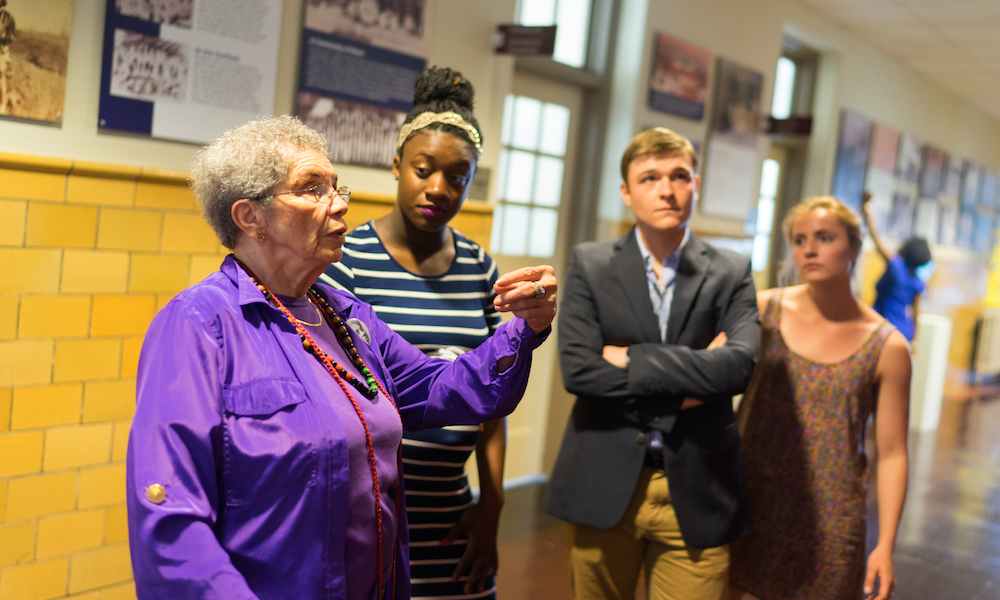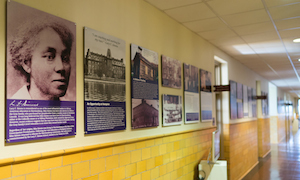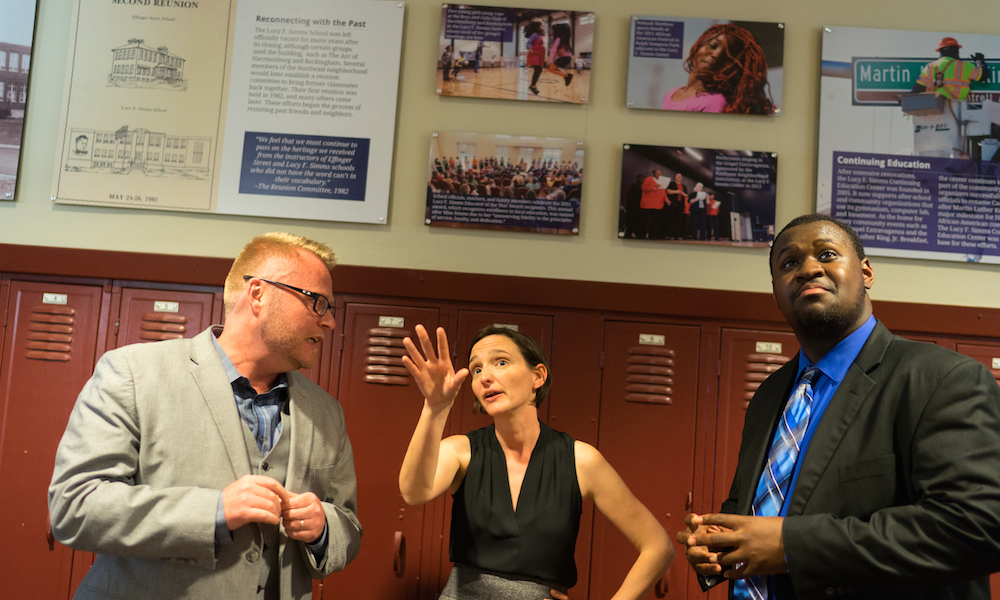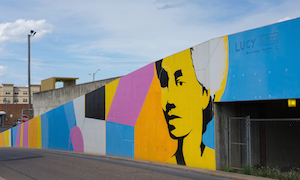Local history comes to life
JMU students and community members partner to preserve African-American history
JMU in the Community
SUMMARY: "Celebrating Simms" is the first permanent exhibition dedicated to African-American history in the Shenandoah Valley. The exhibit, honoring the iconic Harrisonburg educator Lucy F. Simms, launched in April, culminating a yearlong project in which students worked in concert with community members to collect archival materials from libraries and families, then designed the exhibit, a companion website and printed booklet.
From the May 2016 digital issue of Madison.
A collaboration between a team of JMU students and the Shenandoah Valley Black Heritage Project has reanimated history at the local Lucy F. Simms Continuing Education Center.
Together, the partners created a permanent history display featuring 59 panels and more than 100 photos at the center, which honors the life and legacy of Harrisonburg’s iconic African-American educator and the school named in her honor.
“Celebrating Simms” is the first permanent exhibition dedicated to African-American history in the Shenandoah Valley.

“The value of the Celebrating Simms exhibition to the community is so great it defies description, “ said Robin Lyttle of the Shenandoah Valley Black Heritage Project. “This exhibition will give everyone a better understanding about what black America went through to get an education. We do not learn this history in school. If we did, we would have a better understanding of one another.”
Simms was born enslaved in 1857, but eventually earned a degree from Hampton Institute (now Hampton University) and settled in Harrisonburg to teach nearly 2,000 students from three generations of families. The school was built as a memorial to her shortly after her death in 1934, and served African-American students from 1938 to 1965.

The exhibit launched in April, culminating a yearlong project of interdisciplinary students guided by English professor Mollie Godfrey and Sean McCarthy, professor of writing, rhetoric and technical communication. Students worked in concert with community members to collect archival materials from libraries and families. Students then designed the exhibit, a companion website and printed booklet.
|
This was an excellent example of how the university and the community can come together with a great outcome. — Robin Lyttle, Shenandoah Valley Black Heritage Project |
“My interactions with the community were the most memorable part of the experience,” said Brett Seekford (’17), an English major from New Market, Virginia. “As an aspiring academic, I realized the importance of reflecting not only on national themes but also on the investigation of local history. I wouldn't trade this experience for the world.”
“This was an excellent example of how the university and the community can come together with a great outcome,” said Lyttle. “Many of the photos and ephemera came from the personal collections of the Simms students and their descendants. The JMU students took on a huge challenge and rose to the occasion, doing an amazing job in telling this history. This exhibition will be viewed for many, many years and I am proud to have been a part of it.”

“The exhibit is important for the community because it recognizes the northeast neighborhood's contributions to the city of Harrisonburg,” said Seekford. “This history often goes unnoticed, but the increased attention it has received through this project informs current and future citizens about the influence of the African-American community on the city's development.”
“What if other universities around the country did as JMU has done?” said Lyttle. “What if a Maryland university did a similar project in East Baltimore? Wouldn’t it be great to see a university or college group doing something similar in Ferguson [Missouri] or Oakland? These projects help empower a neighborhood.“
